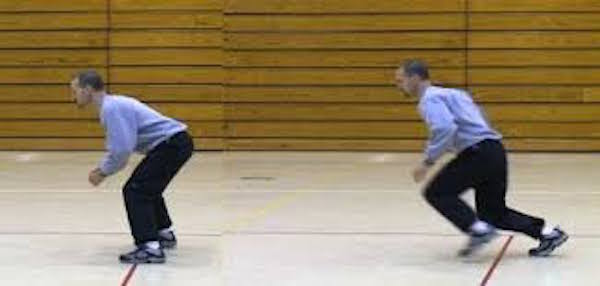

Instinctive Athleticism: Top 3 Steps Improving Biomechanics
Health & FitnessLEVELUP INSIDERS January 17, 2014 Tim Rudd 0

Plyo steps happen naturally to help the body produce force, but improving certain biomechanics can make it more effective.
Training Time: Tim Rudd for IYCA
The plyo step (see video below) is a movement that the body does instinctively to get your body in optimal acceleration angles — out of an athletic stance.
This action naturally occurs during a quick movement of the lower body to align itself in an intended direction for greater force application into the ground.
This to some, looks like a brief step back or “false step”, but it’s actually a push forward.
If it were a step back, then the hips would have to travel back as well! And clearly this doesn’t happen.
Look at the picture above and notice the position of the hips just prior to the Plyo-Step on the left and on the right when the Plyo-Step occurs.
It can be clearly seen that the center of mass only moves forward.
Also because of the stretch-shortening action that occurs when the foot aggressively contacts the ground, there is a quick response (action reaction) that occurs from the ground. This helps to move the athlete forward much quicker.
This normally occurs when the athlete is in some form of parallel or athletic stance. You’ll remember your coaches teaching you the basics of an athletic stance. The video shows this fairly clearly.
The reason the plyo step occurs at all, is because the body realizes it cannot manage the weight of the body effectively from its current position.
In other words, the body doesn’t have optimal angles to efficiently push itself into its intended direction.
It all comes down to biomechanics, physics, and using the correct muscles…
…in their most efficient positions, which the body instinctively understands!
Although the athletic stance allows the athlete to move quickest in any direction, it must be adjusted quickly to have optimal push-off angles.
This is where the plyo step comes in. It is the body’s natural way of positioning itself so it can move quickly in any direction with greater speeds.
When applied in a sporting situation, it allows the athlete to quickly and forcefully attack or avoid opponents or situations during competition.
The plyo step is a natural instinct that can’t and shouldn’t have to be taught. Coaches who try to prevent athletes from performing this movement will only succeed at taking this innate ability away. Making athletes think too much and putting them in bad positions to attack or avoid opponents.
Coaches can however improve the mechanics by which the movement takes place!
Here are my top three strategies to improve the effectiveness of the plyo step:
CORE STRENGTH: This pertains specifically to the ability of the core to resist rotation, flexion and extension of the lower back so the hips and leg can efficiently produce power.
This is more than just planks and side planks. For optimal power production and angles, the athlete’s core must be trained to resist the motions created by the movement of their limbs during an acceleration movement such as a plyo step.
SINGLE LEG STRENGTH: The plyo step and most athletic moves require single leg strength.
I see this as huge limiting factors for athletes when attempting to accelerate in multiple directions.
If an athlete lacks appropriate single leg strength, they can’t absorb and produce optimal amounts of force for a quick and explosive acceleration.
REACTIVE ABILITY: In order to react quickly with a powerful push-off, the athlete needs to learn to be stiff through the muscle and tendons of the legs.
This is where a progressive plyometric program can improve an athlete’s ability to absorb and produce force quickly out of the ground.
To reiterate, the plyo step is totally ruled by the reaction to a stimulus.
It is not a pre-determined thought process. Your athletes are simply reacting to the play and their body takes over from there.
Tim Rudd is an IYCA specialist in youth conditioning and owner of Fit2TheCore.
Read more by Tim Rudd… Four Keys to Agility
[bsa_pro_ad_space id=11]






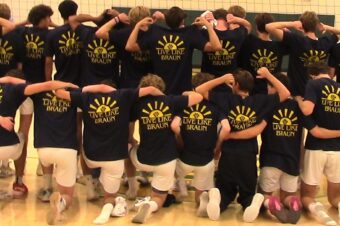
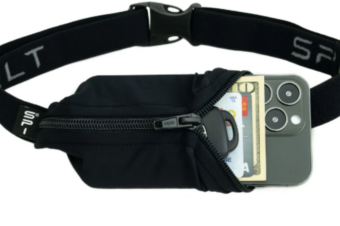
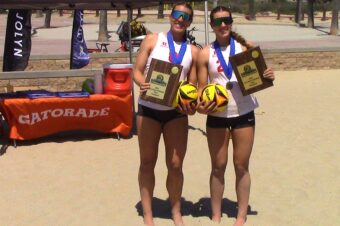

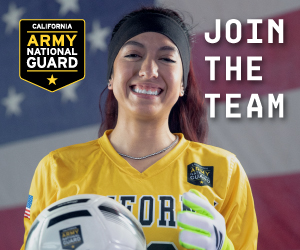

No comments so far.
Be first to leave comment below.